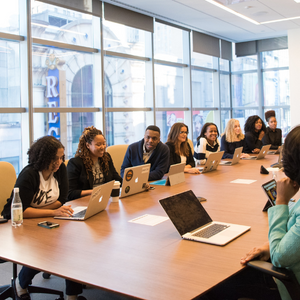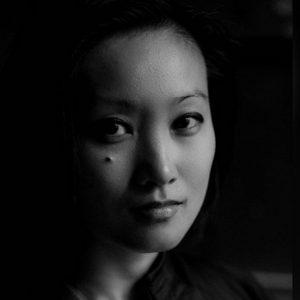Lead with Clarity: How to Change Up Your Perceptual Lens
 Most of us think that our beliefs are truth. But beliefs are not facts. Rather, they are a core part of
our perceptual lens, and thus very powerful in shaping our everyday experiences.
Most of us think that our beliefs are truth. But beliefs are not facts. Rather, they are a core part of
our perceptual lens, and thus very powerful in shaping our everyday experiences.
Psychologists refer to this as a perceptual set – a predisposition to perceive things in a certain way, which leads us to notice only certain aspects of an object or situation while ignoring other details. I like to refer to these as perceptual lenses, because it’s literally the “lens” which you unconsciously and subconsciously perceive the world through that’s driving your behavior.
There are all kinds of perceptual lenses, and each of us tends to use, and overuse, our own few personal favorites. For example, when someone has a competitive lens, they will relate to almost any situation as though it is a competition, whether or not any such competition exists. Someone with a binary lens will relate to most situations as if there is only one right answer, and everything and everyone else is wrong.
Typically, we each have a few favorites that we apply no matter what the context. Because we are using these few lenses by default, they often are not appropriate to the context. We need to expand past our tired old playlist.
There are two kinds of lenses: generally helpful lenses, and those that are impeding when overused.
Generally helpful lenses:
- Collaborative lens. The I-win-when-you-win-approach.
- Optimistic lens. “Everything always works out for the best, even if it doesn’t seem so in the moment.”
- Create possibility lens. It temporarily sets aside all perceived obstacles, problems, or doubts, in order to give you freedom to imagine an ideal.
- Opportunity lens. With this lens, you ask yourself, “How can I find an opportunity in whatever situation I face?”
Impeding lenses:
- “Problems to fix” or “what’s wrong” lens. With this lens, someone is always looking for something to go wrong; they are always wondering what can go wrong here, what will go wrong here?
- Victim lens. “It doesn’t matter anyway.” “I can’t make a difference.” “Bad things always happen to me.”
- Distrust/“It’s not safe” lens. A person with this lens operates from a default position that the world around them is inherently dangerous.
- Binary/“black or white” lens. With this lens, a person tends to view situations as “either/or.” There’s no gray area, there’s no middle ground.
Each of these lenses has its own set of underlying beliefs and assumptions. You see what your lens shows you.
If you habitually default to the same lens all of the time, in every situation, then you are not perceiving the actual circumstances and environment around you. You are seeing only what your lens shows you. You are making assumptions instead of gleaning useful data that would more constructively guide your choices and actions.
You can’t be human and be without any lenses, but you can be aware of your lens, as well as be intentional about choosing an appropriate lens for any given situation. There is a place for a competitive lens and a collaborative lens, for a problems lens and an opportunity lens, and so on. What does not serve us is to blindly and automatically apply one lens across the board no matter what is actually happening.
Road Bump To Choosing A New Lens: You’re Attached To Your Story
You can’t change your lens while wearing your current lens. The people who have the hardest time transforming their leadership, or their lives, are those who hold onto their own story very, very tightly. Their self-image is dependent upon them being “the one who always_________.” The one who’s always right. The one who never gets what they want. The one who always achieves. The one who always cleans up after others. The one who’s the smartest. The one who is always betrayed. When you are so locked into your story, then a change of perceptual lens can feel destabilizing. If you aren’t the one who always is this or that, or who does this or that, then who are you?
When you step into the unfamiliar territory of using a new lens, you need to be willing to “try” it out. On some level you will feel some relief—because you are choosing a lens that empowers you— but on another level you are likely to resist the feeling of change.
Recognize your discomfort for what it is: your ego’s inner defenses against change. The solution? Acknowledge that discomfort while trying on the new lens— even though it feels odd, contradictory, or just plain impossible. You keep doing that again and again until the new lens can start to stay in place, and the new lens becomes the new you.
Initially, you aren’t going to have “proof ” that any of these helpful lenses will bring you better results than your current, impeding lens. You can only give them a try. Be curious, open, experimental. Lean into it. Doing so increases your options. And pay attention to what happens; observe your new results. Loosen up on your own story until you really get that your story is not you. That’s the only way that true change can happen.
By: Jody Michael is the author of Leading Lightly: Lower Your Stress, Think with Clarity, and Lead with Ease (Greenleaf Book Group Press, 2022). She is CEO of Jody Michael Associates, a coaching company specializing in executive coaching, leadership development, and career coaching. She is recognized as one of the top 4% of coaches worldwide and is an internationally credentialed Master Certified Coach, Board Certified Coach, University of Chicago trained psychotherapist, and Licensed Clinical Social Worker.










